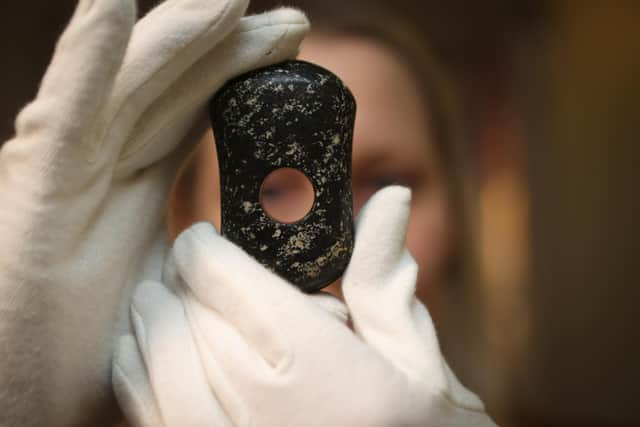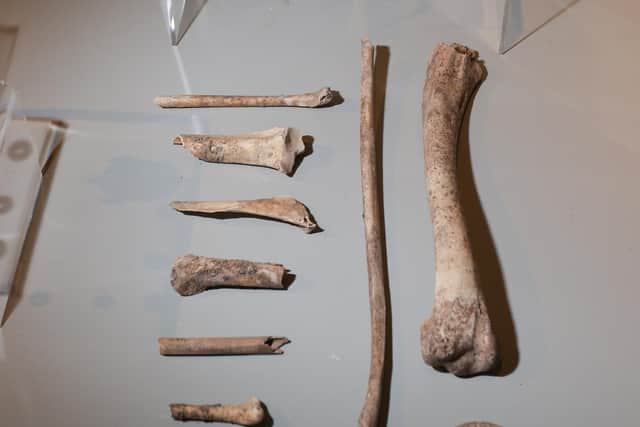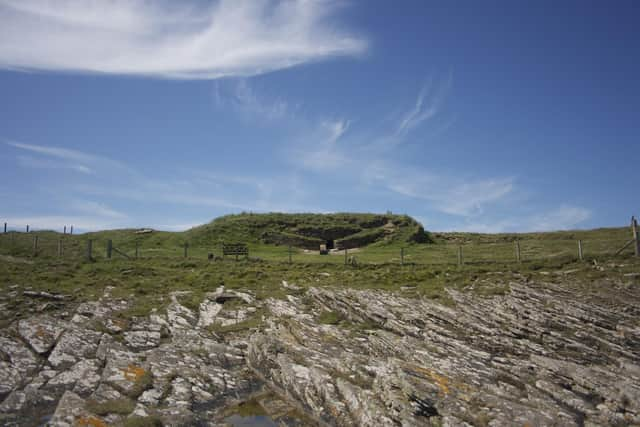Artefacts moved from Tomb of the Eagles following closure of ancient Orkney site
Several items, including bones of sea eagles, pottery and a macehead, have now gone on show at Orkney Museum in Kirkwall after the tomb remained closed following the pandemic.
The tomb and neighbouring visitor centre was run by sisters Kathleen MacLeod and Freda Norquay, the daughters of farmer Ronnie Simison, who found the tomb on his land in the 1950s. They reluctantly had to close the site, a key stop on the Neolithic Orkney trail, given both personal reasons and the financial impact of Covid-19.
Advertisement
Hide AdAdvertisement
Hide AdTalks have since been ongoing to find a home for a number of items originally found in the tomb, which became a place to lay the dead around 5,000 years ago when remains of around 300 people were deposited at the site. Hundreds of sea eagle bones were also left behind around 1,000 years later, giving the chambered cairn its name.


Nick Hewitt, team manager for the council’s museums service, expressed his “huge gratitude” to the family for allowing the items to go into the care of the museum.
He said: “Our experienced curatorial team are very aware of the importance of this site and its story to both the people of South Ronaldsay and visitors to Orkney. We’ve been working hard to make sure that elements of the collection are available to the public again. Over the longer term, we’ll continue working with the Simison family and other key stakeholders to try and identify a sustainable future for this much-loved site.
“Meanwhile we I want to express huge gratitude to the Simison family for their support and encouragement in building on the collection of Neolithic artefacts held by the museum on behalf of the Orkney community – and indeed enthusiasts worldwide.”
Visitors to the Tomb of the Eagles accessed the low chambered cairn by lying down on a specially made trolley, described by some as being like a big skateboard.


During the Neolithic period, human remains deposited at the chambered cairn were brought in and stored in communal groups, with it believed the flesh may have been removed from bones before they were left behind.
Analysis of skulls from the cairn found both males and females, young and old, suffered blunt force injuries to their heads caused by weapons such as maces or carved stone balls.
A total of 641 sea eagle bones were also discovered in the cairn with the remains, thought to have come from eight birds, found deposited in the foundations and placed alongside the human bones, initially suggesting the bird – once common to Orkney – had some special significance.
Advertisement
Hide AdAdvertisement
Hide AdHowever, later analysis found the birds were left some 1,000 years after the cairn was first built, suggesting the site remained an important place over time.


The artefacts have gone to Orkney Museum following consultation with Scotland’s Treasure Trove Unit.
Dr Alison Sheridan, freelance specialist in Scottish prehistory said: “The chamber tomb at Isbister and its contents have provided vital clues about the people who lived in Orkney around 5000 years ago and their descendants.
" Study of the human remains has shown that life was not always peaceful: bones show the signs of inter-personal violence, of illness and of malnutrition. The artefacts placed in the tomb, including offerings of food to the dead, show a belief in an existence after death.
"Centuries after the tomb was built, parts of white-tailed sea eagles were placed in it, perhaps as totemic creatures. Later still, a hoard of precious possessions including a fine stone macehead and a conical button of albertite, probably from the Strathpeffer area, were placed on the outside of the monument. It is good that the finds are going to the Orkney Museum where they will be cared professionally and protected from damage.”
Comments
Want to join the conversation? Please or to comment on this article.